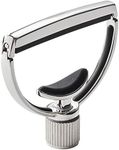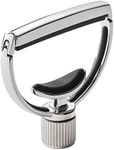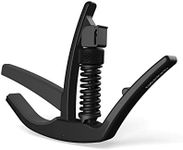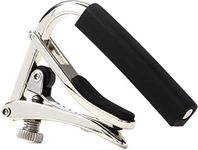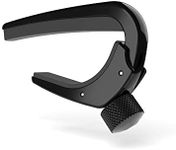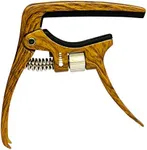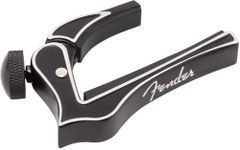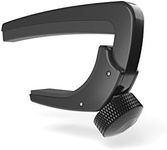Buying Guide for the Best Guitar Capos
Choosing the right guitar capo can significantly enhance your playing experience by allowing you to easily change the pitch of your guitar without having to retune it. A capo is a small device that clamps down across the guitar's fingerboard at a particular fret, effectively shortening the length of the strings and raising their pitch. When selecting a capo, it's important to consider several key specifications to ensure it meets your needs and preferences. Here are the main factors to consider when choosing a guitar capo.MaterialThe material of a capo affects its durability, weight, and how it interacts with your guitar strings. Common materials include metal, plastic, and silicone. Metal capos are generally more durable and provide a firm grip, but they can be heavier. Plastic capos are lighter and often cheaper, but they may not last as long. Silicone capos are gentle on the strings and neck, reducing the risk of damage. Choose a material based on your preference for durability and weight.
DesignCapos come in various designs, such as trigger, screw, and strap. Trigger capos are quick and easy to use, allowing for fast changes during performances. Screw capos offer precise tension adjustment, which can be beneficial for avoiding string buzz. Strap capos are lightweight and simple but may not provide as secure a grip. Consider how often you'll need to change the capo's position and whether you prioritize speed or precision.
Tension AdjustmentTension adjustment refers to how tightly the capo clamps down on the strings. Some capos have adjustable tension, allowing you to fine-tune the pressure to avoid string buzz or intonation issues. Fixed-tension capos are simpler to use but may not fit all guitars perfectly. If you play different guitars or have a guitar with a unique neck shape, an adjustable tension capo might be more versatile.
CompatibilityNot all capos are suitable for every type of guitar. Some are designed specifically for acoustic guitars, while others are made for electric guitars or classical guitars with wider necks. Ensure the capo you choose is compatible with your guitar type to avoid issues with fit and performance. If you play multiple types of guitars, look for a capo that is versatile and can accommodate different neck shapes and sizes.
Ease of UseEase of use is an important factor, especially if you plan to change the capo's position frequently during a performance. Some capos are designed for quick one-handed operation, while others may require more time and effort to adjust. Consider how often you'll need to move the capo and whether you prefer a design that allows for rapid changes or one that offers more stability and precision.
PaddingThe padding on a capo protects your guitar's neck and strings from damage. High-quality padding materials, such as rubber or silicone, provide a secure grip without scratching or denting the guitar. Ensure the capo you choose has adequate padding to protect your instrument, especially if you have a high-end guitar with a delicate finish.
